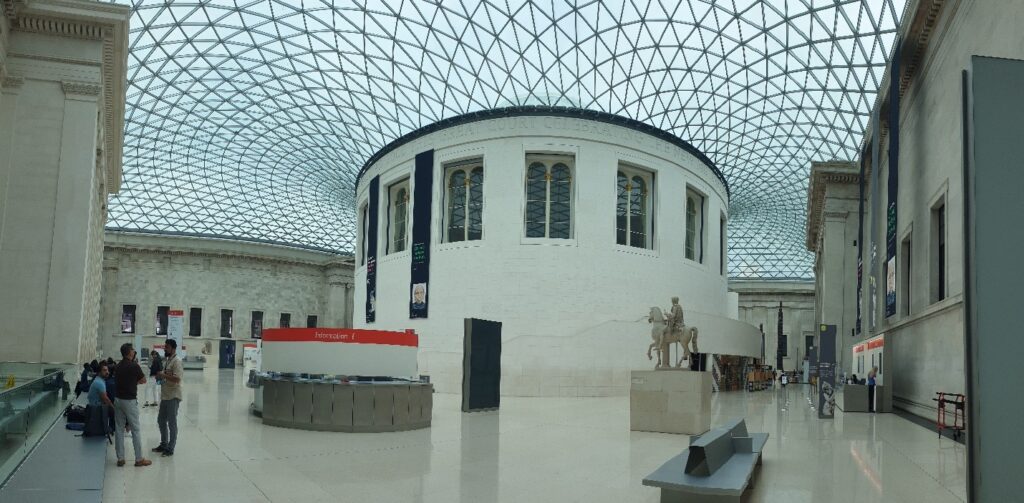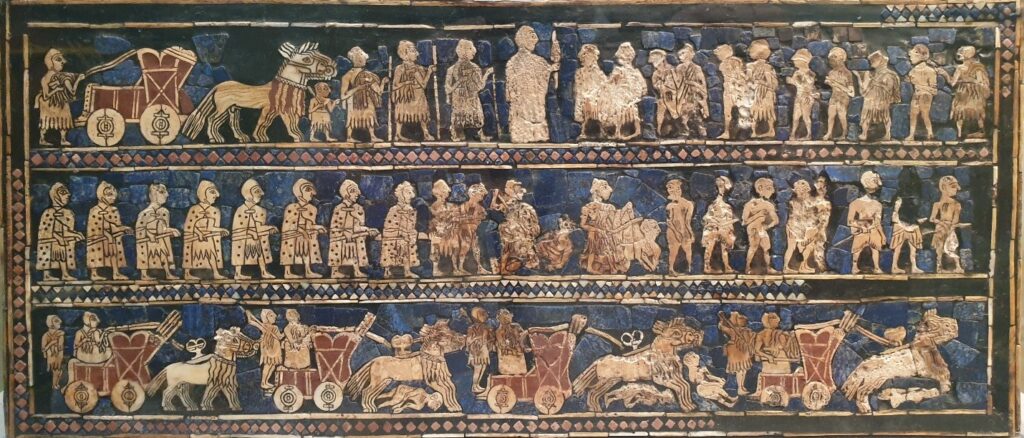My Journey (Twana Mamand, Iraq, ITP 2023)
Written by Twana Mamand, Researcher and Archaeologist, Salahaddin University, Erbil College of Arts, Department of Archaeology, Museum of the Archaeology (Iraq, ITP 2023)
Hello everyone, it’s me Twana Abubkir Mamand from Iraqi Kurdistan. I am a researcher and archaeologist at Salahaddin University – Erbil College of Arts, Department of Archaeology, responsible for the Museum of the Archaeology Department. My dream started when I received an email from Claire, the ITP Manager.

My first day in the UK was also my birthday. When I arrived at Schafer House, Ciprian the ITP senior fellow, and some of my colleagues were waiting to welcome me and congratulate me on my birthday. Thank you for being there! Finally, my dream came true to participate in a course at the British Museum. I can’t describe how the British Museum is, not only in terms of archaeological objects and cultural artifacts, but what adds to the importance of this museum is learning and benefiting from experts conveying their knowledge.
I am happy to work with my colleague Mina Megalla, a curator at the Boyana Church Museum which is a part of the National History Museum in Sofia, Bulgaria, in the Middle East Department. We are supervised by the kind project curator of the same department, Zeina Klink-Hoppe, I thank her for her hard work.
I can’t stop talking about the ITP programme! What has impressed me the most is the balance between teaching, presentations, and various visits to other cities and museums which give me a new insight to how other museums operate. Visiting the famous museums of Oxford and Cambridge was one of my most enjoyable trips, especially the beautiful Ashmolean Museum at the University of Oxford. The unique design, the display of the objects, and their history are clearly visible.
For my partner museum placement, I visited Norwich with George Peckham, ITP coordinator, and ITP fellow Aymen Chihaoui from Tunisia, who is the director of two museums: the Archaeological Enfidha Museum, and the Leader Habib Bourguiba Museum. One of the objects I encountered that attracted my attention and reminded me of my undergraduate memories is the Standard of Ur, a box depicting early Mesopotamian life with two large sides showing different aspects of life. Its purpose remains unknown, but some speculate it may have been mounted on a pole or a sounding box of a lyre. The decoration is divided into three levels, with one side showing peace and the other showing war scenes. The Sumerian army depicted in the Standard features chariots pulled by donkeys, infantry soldiers with spears, and prisoners paraded naked. The ruler, who appears at the top, is larger than all other figures. Workers carrying bags, backpacks, and animals are also depicted. The top level features a royal banquet, where the ruler, dressed in a woolen fleece skirt, sits before his guests. The banqueters are served by attendants and entertained by a singer and musician playing the lyre.


I enjoyed seeing the unique and attractive scenery and the beautiful and peaceful nature of the city while visiting the famous museums of the county including Norfolk Museum and Gressenhall Rural Museum, a place to relax the mind and soul. All this under the supervision of Sarah Gore, Manager at the Teaching Museum, who has made great efforts to get the most out of every aspect of our visit, especially connecting us with experienced and expert people. I’m appreciative of the opportunity to learn from and with this vibrant group of museum professionals from across the world.

